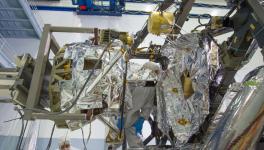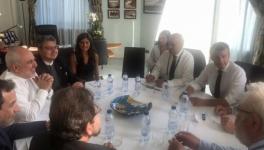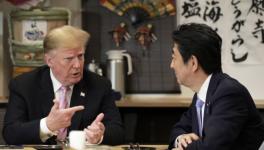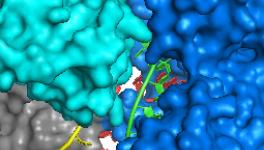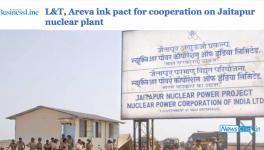Fukushima – Radioactive Cloud over Nuclear Renaissance
Only the very foolish will argue that Fukushima's near meltdown in 3 reactors and a fire in the fuel holding pond of the 4th does not warrant a re-look at the nuclear energy polices of the world or of the country. While nuclear energy could remain a serious option, we must also accept that taking it off the table is also an option.
The Fukushima plant had 6 reactors, out of which 3 were already shut down before the massive earthquake and tsunami. The remaining 3 running reactors were safely shut off when the earthquake hit Japan. With the earthquake, the grid power was not available and the station went off-grid. The back-up power generators, which were installed in low lying bunkers, kicked in for some time, before being taken out by the tsunami, creating the crisis of the cooling systems. The partial melt-down of the Unit 1, 2 and 3 reactor fuel rods and the consequent hydrogen explosions were the direct result of this. The containment in units 2 & 3 seem to have failed, as per the reports of the Japanese authorities, releasing radiation.
All fuel rods have residual heat which needs cooling – whether in the reactor core or in the cooling ponds. Even after being shut-down, power and cooling systems have to work. It is this failure that lead to the crisis in the Fukushima plant.The fires in the cooling ponds of reactors 3 and 4 were the consequence of having no back-up power and not being able to replenish the water boiling off. Perhaps the pre-occupation over the near meltdown of the Units 1, 2 and 3 meant that the other 3 reactors that had been shut down did not receive attention. It is only when the fire started in the cooling pond of reactor 4 that this was recognised as a new threat. Subsequently, there was a similar fire in unit number 3 as well.
Kyodo News Agency reported on March 23 that the situation in Fukushima still remains difficult. While external power has been restored to all the units now, the problem is that each piece of equipment has to be tested for damage before it can be powered. The main focus now is to resume control room functions so that minimum safety operations and monitoring of the radio active levels in the plant can be done in the safer environs of the control room. As of now, the cooling functions at the No. 1, No. 2 and No. 3 reactors, and the pools storing spent nuclear fuel at the No. 1, No. 2, No. 3 and No. 4 units still remain lost.
The immediate danger to a melt-down in the reactors or in the reactor cooling ponds has been averted, but this does not mean by any means that the crisis is over. The problem for the plant staff is to control the cooling systems of the 3 reactors and the 6 cooling ponds under conditions that are hazardous and with equipment that have been badly damaged. This is damage is not only due to the earthquake and the tsunami but also the hydrogen explosions that have ripped through the buildings of units 1 to 4. Even now, the plant staff is pumping sea water to cool the reactors with their temperatures beyond the maximum specified by the reactor manufacturer.
This scenario of controlling the reactors with failing equipment could continue for months. Bringing the reactors to a safe state is not possible unless the reactors are decommissioned. That the first 4 reactors can never be used is obvious. Once sea water is put in the reactor core, it is the end of the reactor. The 4th unit has had a hydrogen explosion and is also out. It is doubtful that unit 5 and 6 will ever produce power again. They may at most be easier to maintain in a shut down state and also easier to decommission.
At any point the temperature can rise, the containment could fail and further explosions could take place. An emergency state would continue till the reactors are effectively de-commissioned People are not talking about this, but decommissioning of these reactors will not be easy, particularly as they have stored fuel in cooling ponds in the same buildings that house the rectors. It is this inventory of stored fuel rods which is likely to be the major problem. A Chernobyl solution of burying the reactors under tons of concrete for reactors could work, but not for the stored fuel rods, particularly as they are not ground level. One cannot pour tons of concrete on the 4th floor of a building – this will bring everything crashing down.
The Japanese authorities have now reported dangerous radiation levels in a 30 Km radius of the plant and also high levels of radiation in a number of food items in the Fukushima Prefecture. Much higher levels of radiation have also been recorded in sea water around Fukushima. Obviously, dangerous amounts of radiation have been released and continue to be released from the plant, even though we have no measurement of the amounts released. Even today, the operators were not able to enter one of the plant buildings because of a high level of radiation there – the level noted was 500 millieverts per hour. The normal amount of radiation a worker is allowed in Japan is 100 millisieverts per year, though this has been raised to 250 millisieverts as an emergency measure for Fukushima.
Based on the impact of the accident, the severity level of Fukushima has been revised from 4 to 5, on par with Three Mile Island but below Chernobyl. French authorities have argued that the Fukushima accident should be considered to be at severity level of 6. There is little doubt that most experts now regard the Fukushima accident to be the most serious after Chernobyl, with no guarantee as yet of the crisis dying down.
At the superficial level, the discussion is whether the back-up generators should have been placed in low lying bunkers and should the sea-walls protecting the plant from tsunami have been higher. Similarly, should the spent fuel rods have been stored on the 4th floor of the reactor buildings. This is distracting attention from the larger issue – no two accidents in the nuclear plants have been similar. While it is important to learn from past mistakes, there is no reason to believe that the next major accident will follow the pattern of any previous accident.
It is interesting to note why the Fukushima plant had its back-up power sources in low lying bunkers – they thought the main danger to these came from typhoons or aerial attacks, therefore the bunkers. If a typhoon, which is also quite common in Japan, had hit Fukushima and the back-up generators had been placed at a higher level, we might well be arguing that they should been placed in bunkers and below ground.
A fundamental review of the technology of nuclear plants would indicate that there has been a strong push to increase unit size and life-time of nuclear plants. Increasing unit size may appear to be a simple problem, but it is not. When plan sizes went up from 700 MW to 1300 MW, there were lots of studies pointing out that the plant complexity increases exponentially with size and therefore lot more problems are inherent in increasing unit size. The same issue lies with increasing lifetime of plants – new problems may appear that were not foreseen when the units were designed, making changes difficult or living with known risks.
The reason why the unit sizes and lifetime increases have taken place is mainly because of economics – it is to beat the bad economics of nuclear plants that manufacturers have increased both. It is only by producing more electricity for a given investment and that too calculating a much longer life-span, can the levelled cost of producing electricity for nuclear plants come anywhere near other conventional forms of energy.
It is this increase in complexity and running the plants for much longer that the nuclear plants have been more accident prone. It is also the only technology that we know where the cost of the technology has increased over time. All others, the costs come down as a technology is adopted and widely used. The only exception is nuclear technology; the more we come to know about nuclear technology, higher the cost.
Worse, companies are running their plants beyond the official lifetime. The Fukushima Unit 1 has had its license renewed only recently. Similar vintage plants have been re-licensed for another 20 years in the US. This, in spite of problems with the Mark I vintage of the plants, which have known problems with containment. In 1986, Harold Denton, then the US NRC's top safety official, told an industry trade group that the
"Mark I containment, especially being smaller with lower design pressure, in spite of the suppression pool, if you look at the WASH 1400 safety study, you'll find something like a 90% probability of that containment failing."
As is now known, the containment in Fukushima failed in 2 of the three reactors that had problems with the cooling systems. Fukushima disaster is going to raise questions on all this, particularly the current cosy relationship that the regulators enjoy with the plant operators. TEPCO, the plant operator of the six reactors of Fukushima is a well-known culprit in this regard, and had 17 of its reactors shut-down in 2003 for falsifying safety data.
For India, apart from reviewing the safety of Tarapur plant, which is an even older GE designed LWR, we need to review the design of the Kudankulam reactor for an accident of this type. Here the back-up power may fail due to other reasons – what would happen to the reactor in this case?
Tarapur is an even worse case. Apart from the plant far beyond its original life and the manufacturer having told the Indian authorities not to extend its life, there is also the huge inventory of spent fuel that Tarapur has. The US has neither taken back the spent fuel nor has it allowed India to reprocess this fuel. Even after the India US Nuclear Deal, the “automatic” permission to reprocess as claimed by the Indian side after the India US Nuclear Deal has not materialised. After Fukushima, this must be recognised as an additional danger in the Tarapur plant.
The idea of 10,000 MW nuclear parks as India is planning for its additional 40,000 MW LWR's from Areva, GE, Westinghouse and the Russians seem to be quite insane given what we have seen in Fukushima. Any accident to one reactor poses additional risks to other reactors and make the task of plant safety that much more difficult. If nuclear energy is thought to be necessary, the only way of going about it would be smaller plants, smaller unit sizes that are dispersed. Clustering a number of units in one place is another example of trying to reduce costs and thereby increasing the risks.
It is time the country had a serious debate on nuclear energy. Instead of this being a secretive affair between the PMO and the Department of Atomic Energy (DAE), we need to bring the light of day into this. What are the costs of the plants being negotiated between the suppliers such as Areva and DAE? How is AERB involved in evaluating the safety of the Areva designs? Is there a move now at least to take out AERB from the purview of DAE and make it an independent statutory body?
Without answers to these questions, we could open the country to an even bigger scam than 2G and expose our people to huge risks. The Anrix case shows that the combination of PMO and Department of Space did not work well to control scams. There is no reason to believe that the PMO and DAE will do any better. That is why transparency is a must on nuclear issues – it is not just money we are talking about but also the safety of millions of people in case of an accident. This is the key lesson we have to learn from Fukushima.
Get the latest reports & analysis with people's perspective on Protests, movements & deep analytical videos, discussions of the current affairs in your Telegram app. Subscribe to NewsClick's Telegram channel & get Real-Time updates on stories, as they get published on our website.











